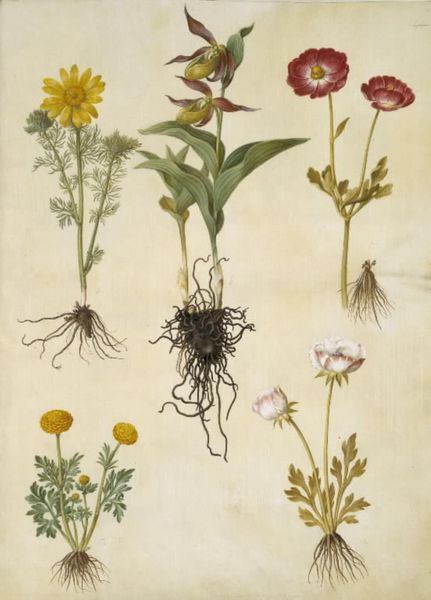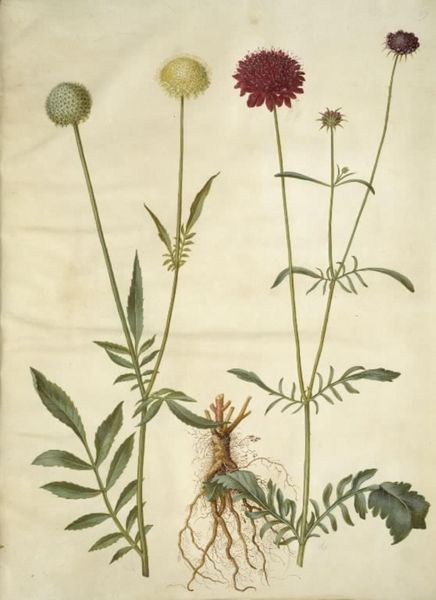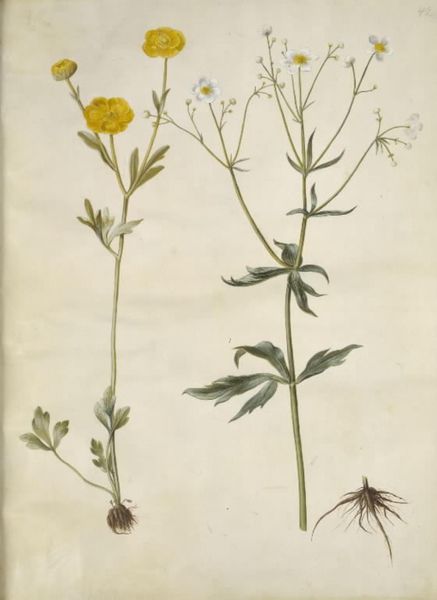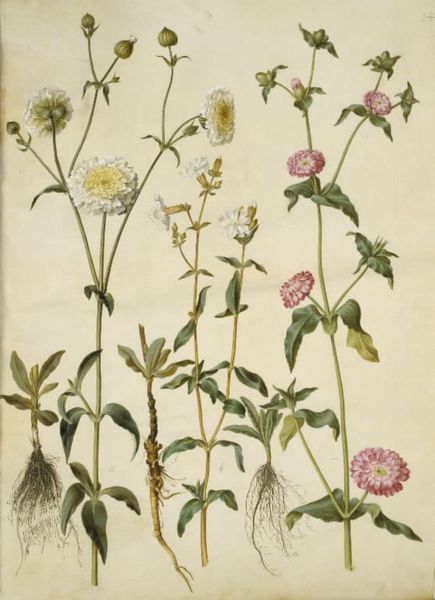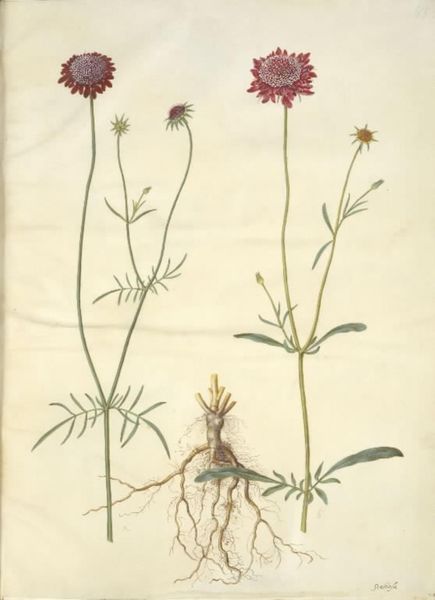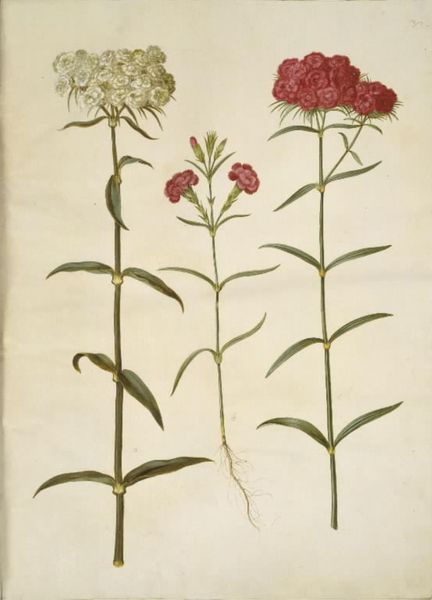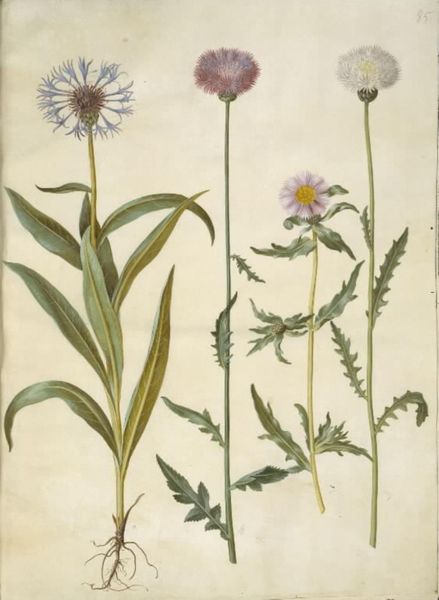
Leucanthemum vulgare (hvid okseøje); Bellis perennis (almindelig tusindfryd) 1649 - 1659
0:00
0:00
drawing, gouache, paper
#
drawing
#
gouache
#
paper
#
11_renaissance
#
botanical art
Dimensions: 505 mm (height) x 385 mm (width) (billedmaal)
Curator: Before us is "Leucanthemum vulgare (hvid okseøje); Bellis perennis (almindelig tusindfryd)," created by Hans Simon Holtzbecker sometime between 1649 and 1659. It's held here at the SMK. Editor: It's remarkably delicate, even charming. The red and white daisies leap from the aged paper, and there's almost an x-ray quality in the depiction of the roots. Curator: The precision is wonderful. Holtzbecker rendered this work in gouache and drawing, which were increasingly favoured for botanical studies in this period. It allowed a high level of control in rendering details such as the root systems and textures of petals. This blend of artistic skill and scientific observation points to how botany was emerging as a scientific pursuit. Editor: It’s striking to me how these flowers are presented; almost clinically, pulled from their natural environment. Were these studies connected to a particular patron or institution? How would they have been used? Curator: Likely connected to the court. These were prestige items, expressions of refined knowledge and control over nature. Think of the burgeoning global trade and how specimens from all over the world flowed into Europe; this art visualizes that acquisition, but also begins to categorize the natural world. The use of gouache and the chosen paper stock speaks to the expense involved. This wasn’t just a drawing; it was a statement of wealth and learning. Editor: It’s also compelling to consider the act of depiction. Someone went to great lengths to pull up the plants, wash off the soil, and record this likeness. Labor is central, from Holtzbecker's painstaking brushwork to the labor of those involved in specimen collection and preparation. Curator: Absolutely. There's the labour to make the drawing itself but also that behind producing the paper, mixing the gouache. These images had a public function as scientific records for wealthy collectors or to illustrate expensive publications. It reminds us how art played a part in defining power structures. Editor: Viewing this makes me newly appreciative of the layers of labour and the political realities infused into a work we might simply classify as botanical illustration. It shows that these types of imagery did serve as both political statements and important classifications that enabled growth of empires across the globe. Curator: A worthy thought. Holtzbecker’s close observations give a peek into how society used images to create a world that reflected the worldview of a select few.
Comments
No comments
Be the first to comment and join the conversation on the ultimate creative platform.
